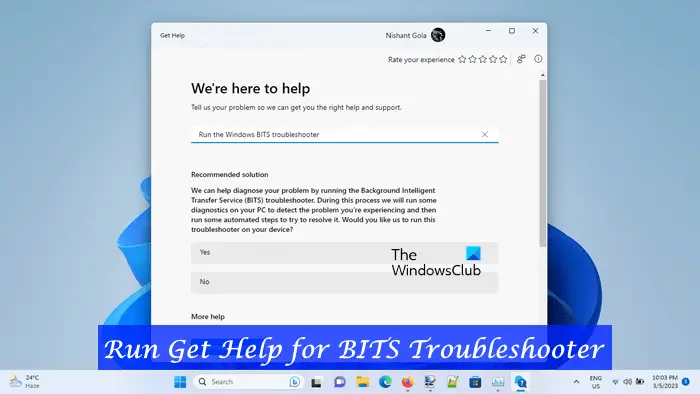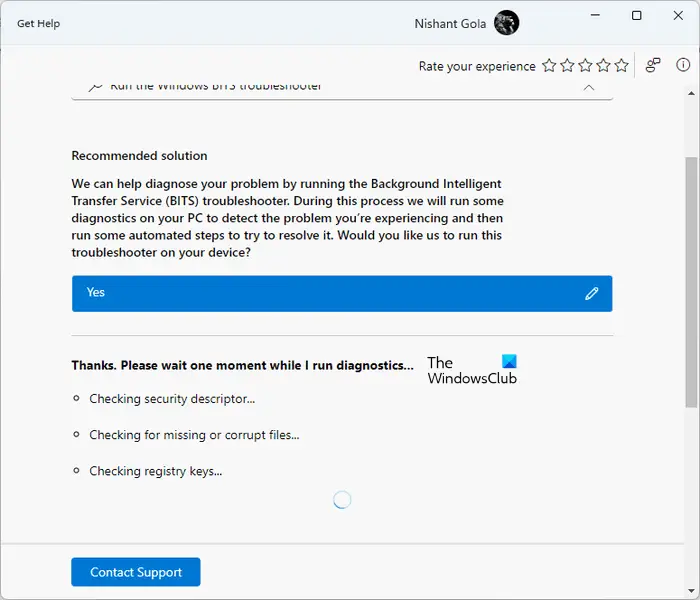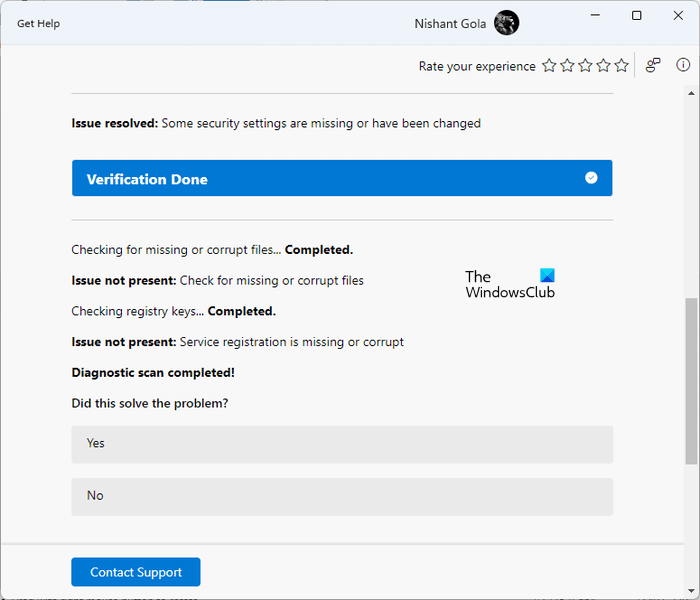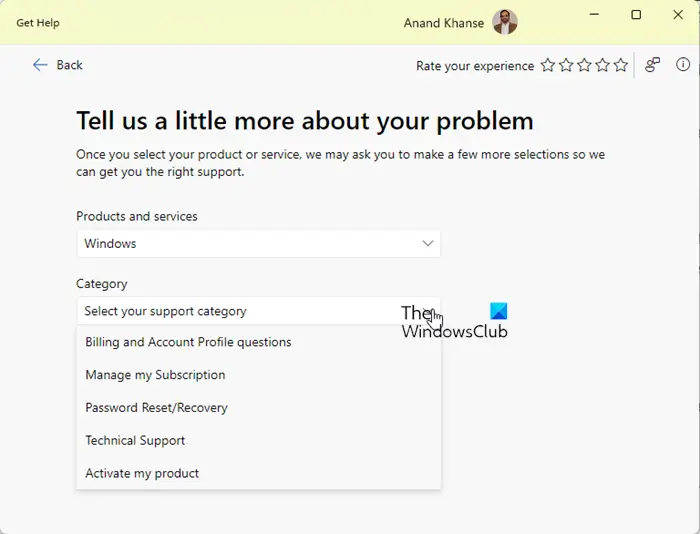In this article, we will see how to run the new Get Help app’s Background Intelligent Transfer Service (BITS) Troubleshooter in Windows 11.
Background Intelligent Transfer Service (BITS) is a service on Windows computers that transfers files in the background using idle network bandwidth. Windows uses this service to download updates on your system. If this service is stopped or disabled, then applications depending on this service will be unable to download programs or other information automatically. In some cases, issues with Windows Updates can be fixed by restarting this service. What if the issue is associated with this service? In this case, running a dedicated troubleshooter can help.

Run Background Intelligent Transfer Service (BITS) Troubleshooter in Get Help app in Windows 11
Last year, security experts detected security vulnerabilities in the MSDT.exe app. That’s why Microsoft has decided to deprecate the legacy inbox troubleshooters and the MSDT.exe tool. This change will be applied only to the computer systems with Windows 11 version 22H2 and later builds via the latest Windows 11 update.
In Windows 11, you can launch the BITS Troubleshooter via Windows Settings. These open the inbox troubleshooter currently; but soon you will automatically be redirected to the new Get Help app troubleshooters.
Unlike other current inbox troubleshooters, it does not start troubleshooting immediately after getting launched. You have to provide your consent to start the troubleshooting process. It will start the diagnostic in a step-by-step manner. After each step, you have to provide your feedback to carry out further troubleshooting.

To start the BITS Troubleshooter in the Get Help app on Windows 11, follow these steps for now:
- Open the Get Help app
- Type ‘Run the Windows BITS troubleshooter’ in its search bar and hit Enter
- Once the troubleshooter opens,click Yes to give it your consent.
- After getting started, it will run the following tests on your system:
-
- Check security descriptor.
- Check for missing or corrupt files.
- Check your system Registry keys.
Alternatively, click here to open the Program Compatibility Get Help Troubleshooter directly. A new tab will open in your browser, click on the Open Get Help button in the popup that appears.
The above tests will take some time. Hence, you have to wait till the tests get completed. After running the above tests, if the troubleshooter finds any problem on your system, it will inform you about that and will automatically take action to fix it. It will also display the status of the diagnostic action. If the diagnostic action is completed successfully, you will see a tick mark; otherwise, you will see a cross.

After the diagnostic process gets completed, the BITS Troubleshooter will show you which issue has been fixed by it. On my system, the BIT Service was stopped. I launched this troubleshooter. It performed some tests and fixed the problem. After the completion of the diagnostic process, I opened the Services Manager to see the status of the BITS service and I found that the issue was fixed.
In the end, it will ask for your feedback. If the problem is fixed, click Yes, otherwise, click No. If it fails to resolve the problem, it will ask you to report this problem to Microsoft via the Feedback Hub. Click Yes if you want to report the problem to Microsoft, otherwise click No.
If you want to contact support, click the Contact Support link on the Get Help app. On scrolling down, you will see the More help section containing more useful links.

If you click on these links, you can read the Microsoft Support articles in the Get Help app without opening your web browser.
How do I get Background Intelligent Transfer Service running?
Windows Service Manager is an app that lets you manage background services on Windows 11/10. If the BIT Service is not running on your system, you can run it via the Services Manager. Open Services Manager, and look for Background Intelligent Transfer Service. Once you find it, right-click on it and select Start.
How do I run Windows troubleshooter in Windows 11?
Windows 11 has different troubleshooters to fix different issues. You will find all troubleshooters in Windows 11 Settings. Open Settings and go to “System > Troubleshoot > Other troubleshooters.” Microsoft is gradually retiring inbox troubleshooters in Windows 11 version 22H2 and later builds. After this, the links to the troubleshooters will be redirected to the new Get Help app based troubleshooters.
Read next: Background Intelligent Transfer Service stopped & not working.